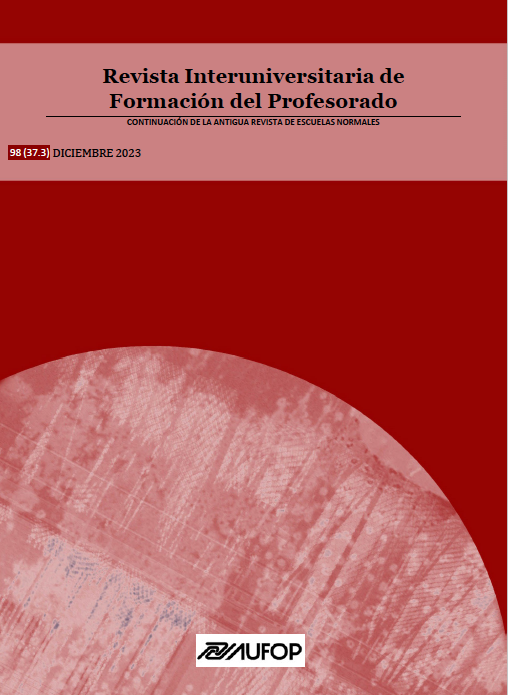Cognitive connections between body movement and rhythmic training in Primary Education.
A study with music teachers in Chile
DOI:
https://doi.org/10.47553/rifop.v98i37.3.100661Abstract
In the area of neurophysiology, it has been found that there is a great influence of motor development in the processing of music. Therefore, bodily expression seems to be an ideal way to approach musical rhythm on the school stage. The purpose of this research, which is part of a larger study, was to understand how music teachers in Chilean primary education perceive the relationship between rhythm and movement. In doing so, we sought to find links between their teaching practice and the theories and findings that address the cognitive relationships between these aspects. Data were collected by applying an online questionnaire to a population of 203 Chilean teachers. Within this instrument, eleven closed questions were included referring to the binomial rhythm-movement and three open questions related to rhythmic training in the classroom and the use of musical instruments. The information gathered revealed that the interviewees agree that the most effective means to develop rhythmic skills is body movement. Music teachers incorporate marching, dancing, choreographic structures, and body percussion to favor the acquisition of pulse, accents, and rhythmic phrases. Similarly, motor expression is frequently used as a didactic resource in group learning activities.
Downloads
Published
Versions
- 2023-12-28 (2)
- 2023-12-27 (1)
How to Cite
Issue
Section
License
The "Revista Interuniversitaria de Formación del Profesorado (RIFOP)", with ISSN print 0213-8646 and ISSN electronic 2530-3791), adheres to the copyright notices proposed by Creative Commons
Authors’ rights
Papers published in the journal are subject to the following terms:
1. The Asociación Universitaria de Formación del Profesorado (AUFOP) is the editor of the RIFOP and holds the copyright of the papers published therein. The reuse of these is allowed under the license for use as indicated under point 2.
© Asociación Universitaria de Formación del Profesorado (AUFOP)
2. The papers are published in electronic version under the license CreativeCommons Reconocimiento-NoComercial-SinObraDerivada 3.0 España (texto legal). Papers can be copied, used, disseminated, transmitted and publicly exhibited provided that: i) the authorship and original publication source are cited (journal, editors and URL of the paper); ii) they are nit used for commercial gain; iii) the existence and specifications of the license for use are mentioned.
3. Auto-archiving conditions. Authors are allowed and encouraged to disseminate electronic pre-print versions (versions prior to peer review) and/or post-print (versions reviwed and accepted for publication) of their papers prior to their publication, since this favors prompt circulation and dissemination and supposes a possible increase in cites and scope within the academic community.
Privacy declaration
The names and email addresses incorporated into this journal will be used solely for the declared purposes of the journal and will not be available for any other purposes or to third parties.






